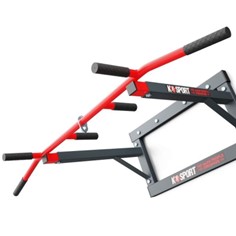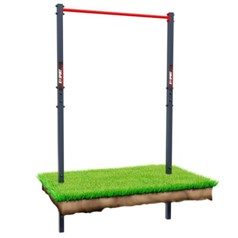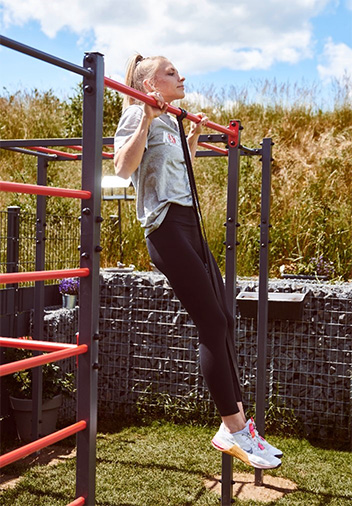Your K-Sport outdoor workout - How do I learn pull-ups?
Do you want to add pull ups to your training but find it difficult to get started or can't manage the number of repetitions? No need to be depressed and avoid this effective exercise. Pull ups are exhausting. But the effort pays off! Even experienced athletes don't always manage to get their chin over the pull-up bar. We'll show you how you can manage more than one pull-up, even as a beginner!
Which muscles are used?
Pull-ups are one of the best muscle-building exercises there is. They train a lot of muscle mass together. During pull-up training, you strengthen your back, your arm muscles and also your abdominal muscles. The abdominal muscles? Yes, you heard right. What many people don't realise is that the body tension during pull ups allows you to train your abdominal muscles as well. Therefore, you should definitely not ignore this exercise when it comes to a toned stomach!
What do you need for this?
As today is all about getting started and being able to increase the repetitions, we are using an aid. Resistance bands are ideal for this. You can find a high-quality set of durable resistance bands in our shop. Choose the resistance that suits your current level of training. To adjust the level of difficulty, you can choose between thinner or thicker bands. Lots of resistance = easier; little resistance = harder.
Pull-up bar
This is the basic prerequisite for our unity today. You can find a selection of different models for indoor and/or outdoor workouts listed here.




If you don't have the option of mounting a pull-up bar on the wall, you can also find free-standing pull-up bars for indoors.
Execution:
Tie the band once around the pull-up bar as shown in the video. Place one foot (or both feet) in the lower loop of the resistance band. Then grasp the pull-up bar at about shoulder width. Now pull yourself up with your arms, ideally with your chin over the pull-up bar. Your abdomen is also active and should be tensed.
You will notice how the band supports you during the movement. If the exercise is too difficult or easy, use a different band. You need to test this for yourself at the beginning.
Through regular repetition (at least twice a week, depending on how much time you have), you will quickly achieve a clean execution. Remember, as always, it's better to do fewer repetitions, but with optimal execution.


Alternative version without resistance band (simplified exercise):
Don't have any suitable elastic bands to hand but still want to start learning pull-ups? An alternative that is even easier to start with is negative pull-ups. Get a box or a training partner to help you get to the pull-up bar if you can't do it yourself.
Hold on to the pull-up bar for a few seconds (approx. 30 seconds) and lower yourself as soon as you can barely hold on with maximum negative movement (i.e. as slowly as possible). Repeat this once in 4 sets with a break of approx. 1½ minutes.
Increase your repetitions gradually or slowly work your way up to the lighter bands. As soon as you keep at it regularly, you too will finally be able to do a pull-up without any aids.
Have fun and success with your training!
Stay strong! - Your team from K-Sport
